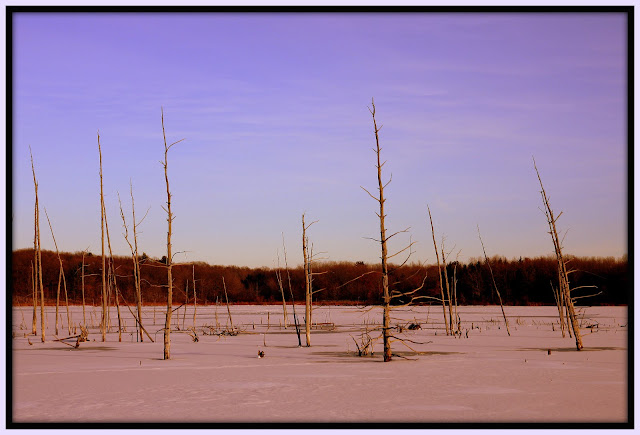Pronghorn
As we travel the western states over rolling hills of sagebrush plains, sandwiched between mountain ranges, I'm always on the lookout for Pronghorn.
As I'm driving, I'm scanning left and right, searching the slopes, investigating the valleys. Only a few seconds for a quick glimpse, then I need to bring my eyes back to the road.
We often see a small "Band" (as they are sometimes called) of six to ten, perhaps 15 to 20 in a larger herd, way off in the distance; 150 yards, 300 yards, maybe 500 yards and beyond. And this is only if they are standing or running. If they're lying down, forget it, a sighting is unlikely.
Once we are settled into a campsite, we'll take off in our pick-up to explore the backroads, bouncing over low boulders along a dusty two track of sand, gravel and rocks. Dipping into shallow ravines, paralleling dry stream beds, weaving around clumps of sagebrush.
If I spot a herd in the distance, we'll pull off the road. If we're lucky, there may be a grove of Cottonwood trees growing along a trickle of a stream, where we can park...
and wait...
... then gently slip out of the truck for a longer look. Binoculars. Camera. Patience.
These animals of wide open spaces are extremely wary of any changes in their surroundings. Their field of vision is nearly 360°.
The Pronghorns are instantly, intensely aware. I hurry to capture a few shots while they are still standing still.
We're looking at North America's swiftest mammal; reaching speeds of 40-53 mph (64-86 kph). They can run for miles at half this speed.
 |
| (Click on photo to enlarge) |
This herd scurried and scrambled up this steep, rock-strewn slope with speed and grace; kicking up the dust with their hard hoofs.
It was a pleasure to watch them glide as a group through their landscape. They may cover 20 feet in one leap. You can see the confidence in their ability to outrun, or outdistance most of their predators and threats. Predators would be packs of Coyotes going after the young. Threats would be humans, like this Nature Photographer.
Pronghorns mate in the fall. Bucks gather harems of females and protect them jealously, sometimes battling rivals in spectacular fights.
Eight months later, in the spring, (gestation 230-240 days) females give birth to one to three (usually two) young.
They are born scentless, and are able to walk immediately. The grayish-brown kids are left alone for a few days, except at nursing time, then follow the mother after a few weeks.
The young can outrun a human after a few days, and outrun a dog after ten days. The mother alone defends the young.
In July, does and kids make small bands, joined in August by young bucks.
Pronghorns, often called Antelopes, mature at five years, and their average life span is 10 -12 years.
In dangerous situations, and also during courtship, it signals to other Pronghorns by raising the white hairs on its rump. The herds are kept together by bucks, or family instinct.
Within this range, their preferred habitat is grasslands, sage flats, and semi-arid prairies.
Individuals roam over an area of two to four square miles (3.2-6.4 sq. km). Here, they feed on shrubs, forbs, grasses, and cacti. It is especially fond of sagebrush. They chew their cud (partially-digested food).
 |
| (Click on photo to enlarge) |
Size: Head and body 3.25 - 5 feet (1-1.5m) tall.
Weight: 90 - 150 pounds (41-68 kg).
Tail: 3 - 4 inches (7.5-10 cm).
In winter they may migrate to more suitable grazing areas; traveling up to 20 miles a day. They can easily leap five-foot fences. There may be slight competition for food with cattle and sheep, but the Pronghorn feeds mostly on vegetation not eaten by domestic stock.
The fur is tan, with a white belly, rump, chest, and lower face. Two, white, crescent-shaped bands curve around the lower neck.
Both genders have horns, but the males' horns are much larger: 12 - 20" (30-50 cm).
The Pronghorn has true horns; bone cores covered with horny sheaths (keratin) made up of agglutinated hair, but is peculiar in that the sheaths are shed each year.
This mammal is adapted to temperature extremes of the open plains. It maintains a constant body temperature by adjusting its loose, hollow-haired fur. When the hairs lie flat, cold air is kept out; when hairs are erect, air circulates near the skin and allows body heat to escape. When running, they posses an extremely efficient circulatory and respiratory system.
We never expect to get very close to these swift and beautiful creatures, but every sighting is exciting.
I hope you get an opportunity to watch Pronghorns prancing over the plains, or sprinting through the sage, sweeping over the land in a graceful band, covering incredible distances in seconds. As you watch, you will stand there dazed by their beauty, amazed at their speed.
PRONGHORN. . . . . . . . . . . . . . . . . . . . You shall know them by their velocity.
(Click on Photos to enlarge)
Photo Locations:
Grand Teton National Park (Tetons) "Antelope Flats", Wyoming (Wyoming)
Salmon River - Lost River Range, Challis, Idaho (Idaho)
Flaming Gorge National Recreation Area, (Flaming Gorge) Utah (Utah)
Resources:
Fieldbook of Natural History - E. Laurence Palmer c 1949
Peterson Field Guide to the Mammals - William Burt & Richard Grosssenheider c 1964
Reader's Digest North American Wildlife - c 1982















































